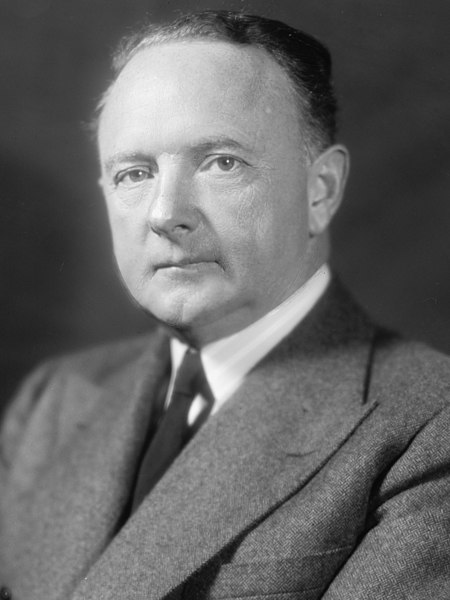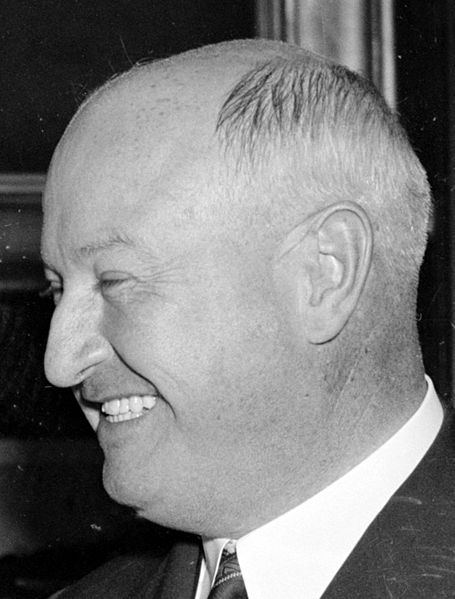1944 Democratic National Convention
The 1944 Democratic National Convention was held at the Chicago Stadium in Chicago, Illinois from July 19 to July 21, 1944. The convention resulted in the nomination of President Franklin D. Roosevelt for an unprecedented fourth term. Senator Harry S. Truman of Missouri was nominated for vice president. Including Roosevelt's nomination for the vice-presidency in 1920, it was the fifth time Roosevelt had been nominated on a national ticket. The keynote address was given by Governor Robert S. Kerr of Oklahoma, in which he "gave tribute to Roosevelt's war leadership and New Deal policies."
Robert E. Hannegan opening the convention
President Franklin D. Roosevelt of New York
Senator Harry F. Byrd of Virginia (Did not actively run)
Former Postmaster General James Farley of New York (Not Nominated)
Vice President of the United States
The vice president of the United States (VPOTUS) is the second-highest officer in the executive branch of the U.S. federal government, after the president of the United States, and ranks first in the presidential line of succession. The vice president is also an officer in the legislative branch, as the president of the Senate. In this capacity, the vice president is empowered to preside over the United States Senate, but may not vote except to cast a tie-breaking vote. The vice president is indirectly elected together with the president to a four-year term of office by the people of the United States through the Electoral College. Since the passage of the Twenty-fifth Amendment to the US Constitution, the vice president may also be appointed by the president to fill a vacancy, via majority confirmation by both the Senate and the House.
Vice President of the United States
John Adams, the first vice president of the United States
Though prominent as a Missouri Senator, Harry Truman had been vice president only three months when he became president; he was never informed of Franklin Roosevelt's war or postwar policies while serving as vice president.
1888 illustration of John Tyler receiving the news of President William Henry Harrison's death from Chief Clerk of the State Department Fletcher Webster








